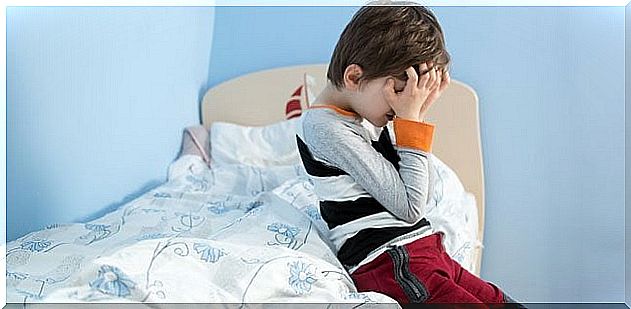Punishing Children And Side Effects

When we prohibit our children from going to their favorite singers’ concerts or using the computer for a few days because of their behavior, we try to penalize their misconduct. Punishing children is meant to suppress a series of unwanted actions. Punishments offer two main advantages: on the one hand, they have a quick effect; on the other hand, they eliminate inappropriate behaviors and reorganize the desired ones.
However, punishing children also causes some side effects that adults often don’t take into account. These reactions, mainly emotional and behavioral in nature, make us think that punishment is perhaps not the best tool to end or mitigate wrong behavior.
Positive punishment
Punishment is a control technique used to suppress certain unwanted conduct. In this article we focus on the so-called positive punishment, or the sending of an aversive stimulus intended as a source of unpleasant consequences for the recipient.
An example of such conditioning could be when a child is constantly biting his nails and we apply a very bitter product to make him stop. In this way, every time he puts his fingers in his mouth, he will receive an unpleasant sensation. If he repeats it on many occasions, he will end up giving up the habit so as not to perceive the bitter taste.

Punishing children and effectiveness
In order for the punishment to be as effective as possible, some variables must be taken into account:
- Intensity : The relationship between intense punishment and its effectiveness is direct.
- Duration : if the punishment is extended over time, it seems to guarantee greater effectiveness.
- Contiguity : when the punishment is given immediately after the attitude or conduct that is to be eliminated. If the application of the aversive stimulus is postponed, the efficacy fails.
- Contingency : The punishment must not be suspended until the misconduct ceases. Otherwise, there will be a short-term and very fast recovery of the conduct in question. When children challenge us with questions such as “Am I still in punishment?”, We need to be able to say “yes”.
- Stimulating experience : If the punishment is new to the child, it is much more effective.
- Alternative : it is important to have an alternative response in place of the punished one.
Finally, the child must make up for the damage he has caused by his behavior to the extent possible. For example, if he plays ball inside the house even though his parents have told him he must not do it and, unwittingly, breaks a vase, he will have to clean, pick up the pieces and attack them.
Disadvantages of punishment
In general, the results of instrumental conditioning (response-consequence) are very useful. Human beings act guided by motivations and interests, they tend to repeat the behaviors or actions for which they receive a reward. However, when this philosophy is implemented in the infantile sphere, punishment is not always the best way to educate. Among the main disadvantages of this practice we find :
Emotional responses
The emotional state of a person we have just punished is generally quite frustrated. It is associated with negative thoughts against the person causing it and generates a feeling of helplessness. Therefore, different emotional responses can be produced such as tears, screams, scenes, tantrums… and even aggressive behavior. And not only addressed to the person who inflicted the punishment, but also to others present.

Signal stimulus
The person giving the punishment and other environmental stimuli may become unpleasant to the child in their own right or as warning signs of an approaching unpleasant consequence. Following this, the punished conduct will not manifest itself in the presence of the stimulus in question, but in its absence.
This side effect is the prototype of classroom behavior: children behave badly when the teacher is absent, and they stop behaving like this the moment they walk in the door.
Replacement with other inappropriate behaviors
Punishing children can promote the replacement of the punished conduct with other equally undesirable ones. In light of this, it is very important to apply the sanction together with an alternative, so that the child understands why he is being punished and which actions are positive.
While punishing serves to eliminate a certain conduct, it also provokes others of escape and avoidance from the ensuing consequences.
No to physical punishment
The person giving the punishment may exaggerate. If the punishment is physical and involves a slap or a blow, the effect will be doubly negative. Not only because it is punishable by law, but also because parents are role models for their children and in this way they convey to them the idea that it is right to hit.
Children learn everything they are taught, therefore also bad habits and behaviors, although they are corrective and aimed at improving their behavior.
Punish children with moderation and discipline
In the presence of several possible responses, including the unwanted one that you want to suppress, it is possible to reward the realization of any of the other responses if they are incompatible with the realization of the unwanted one. Usually this method known as differential reinforcement (DRI) of other pipelines gives better long-term results than direct punishment of the unwanted response.

Children do not have to be educated in a continuous exchange of rewards and prohibitions, otherwise they will not learn to value discipline. So, for example, they won’t do their homework because they find it useful for their future, but because they know they can hang out with their friends on the weekend. This attitude will give its results, but these will present a good part of extrinsic motivation, that is, the children will memorize without learning, only in view of the reward.
Punishment, therefore, must be inflicted with care and moderation, as excess can make the child antisocial.









